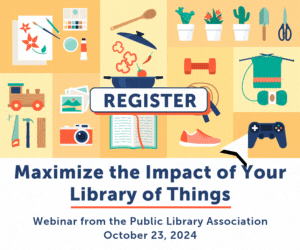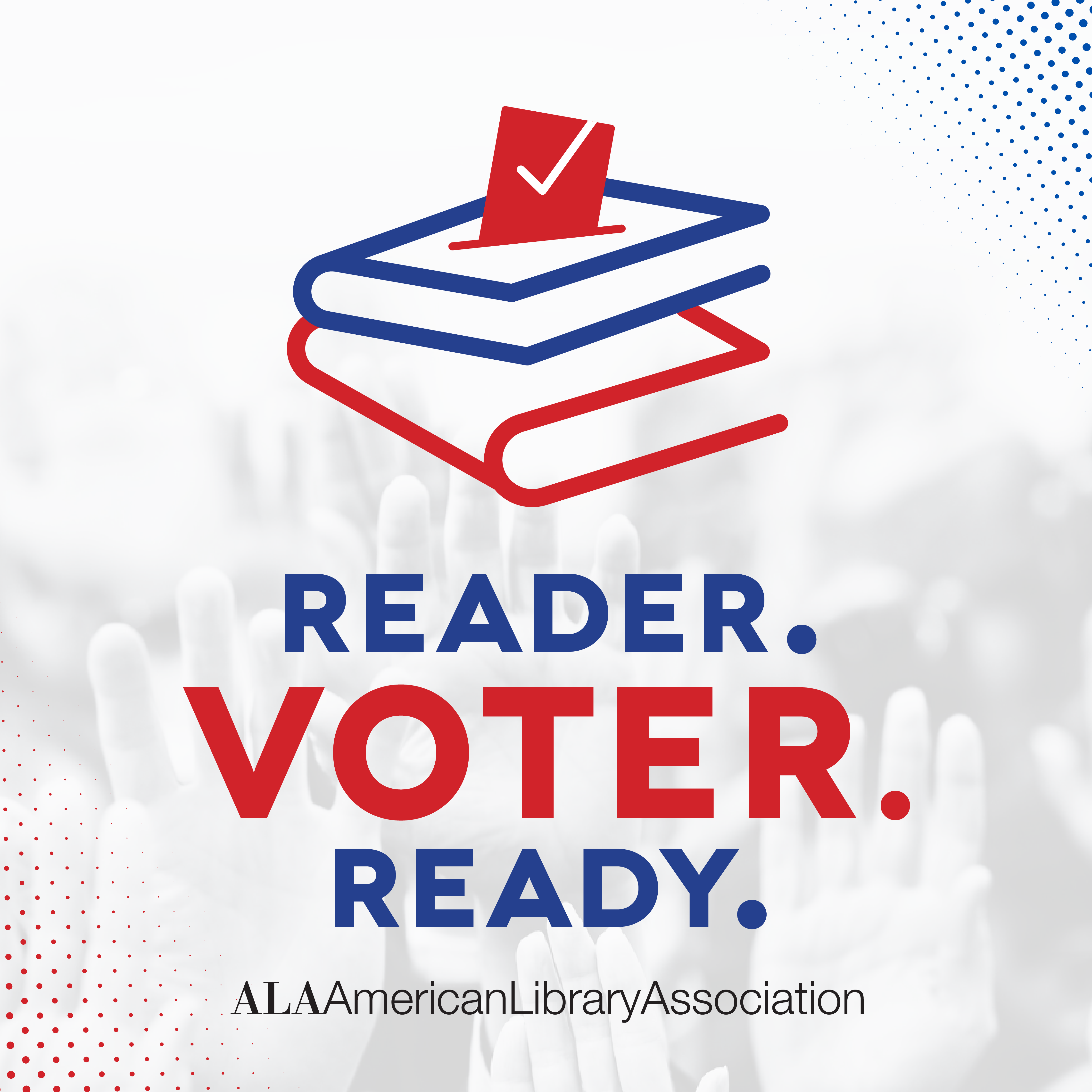FEATURE | The Imitation Game: Applying For-Profit Strategies in the Nonprofit World

About the Author
CHELSEA DODD COLEMAN is Information Services Supervisor at Montclair (NJ) Public Library. EMILY GRACE LE MAY is the Youth Services Librarian at Mt. Pleasant Library, Providence (RI).
Contact Chelsea at chelsea.dodd@gmail.com. Contact Emily at emilygracelemay@gmail.com.
Chelsea is currently reading Tudors Versus Stewarts: The Fatal Inheritance of Mary, Queen of Scots by Linda Porter. Emily is currently reading Vanishing Girls by Lauren Oliver.
When it comes to making changes in the workplace, most of us already know to look for inspiration from other libraries and librarians, and even other nonprofit groups, but there is much to be learned from the for-profit world. If you’re looking to improve your statistics and create a new, vibrant environment, check out some corporate strategies and adapt them for your library. Adaptation is crucial—what was popular and worked well before may be passé and ineffective now, and a service or medium of communication that seemed like a passing fancy may be here to stay.
A good business trend that public libraries can jump on this year is customer experience management (CXM), a proactive approach that focuses on delivering value to customers. An effective CXM strategy drives brand advocacy, sales, and revenue. When adapted for libraries, the evaluation of brand advocacy remains largely the same. However, libraries should look at the sales component in terms of circulation and program attendance, and revenue by way of increased fiscal support from local/federal government, donations from community members, and partnerships with other organizations. It is a mistake to assume that enhancing our operations with business practices will detract from our public service mission. Corporations spend millions of dollars to understand what makes a customer tick, and we should take advantage of their knowledge. Only libraries willing to step out of their comfort zones will thrive in the twenty-first century.
Customer Service
Providing good customer service is important in almost every line of work. While there are many amazing companies to learn from, let’s start with three from the 2015 Customer Service Hall of Fame.[1]
Amazon
Why they’re great: The company recently patented their anticipatory shipping service, which uses “order histories to predict what a customer will need, and then ships to nearby warehouses and hubs before they even purchase the item.”[2]
How this can be applied to libraries: Get to know your patrons. Use the inevitable small talk that occurs at the circulation desk to your advantage, and take notes if you need to. Make collection purchases and plan programs with patrons in mind, set new materials aside for them when they arrive, and always offer to order an item for them if it’s unavailable. You should also consider reaching out to neighboring libraries to get an idea of what materials they have and what programs they offer that could be of interest to your own patrons. The patron will probably relish the attention, you’ll know what sort of programs to offer in the future, and the books you purchase will have readers waiting upon arrival. Win/win/win.
Apple
Why they’re great: They believe that good customer service stems from “employees who are motivated, who take ownership, [and] who take pride in what they do.”[3]
How this can be applied to libraries: Managers need to make good hiring decisions, pursue change-makers, and allow existing staff to implement changes to make their work lives easier and improve upon the lives of patrons. Staff members are the face of your library and should be included in the decision-making process.
Marriott
Why they’re great: The first of their core values listed online is “take care of associates and they will take care of the customers.”[4]
How this can be applied to libraries: Hiring decisions are just the first of many steps. Management should continue to be responsive to, supportive of, and engaged with their staff. When employees feel that management has their back, loyalty to the library and the services it provides is assured.
Listening and responding to patrons is a key component of sophisticated customer service. For example, the museum pass program at Montclair (NJ) Public Library only has enough museum passes for a twenty-four-hour checkout, which means that most patrons must pick up the pass on the day of their visit. This became an issue for those wishing to visit a museum in New York on a Sunday when the library does not open until 1 p.m. After feedback from patrons, the policy was adjusted so that museum passes are checked out for an entire weekend—a minor adjustment that improved the program.
But was this feedback only given to the department that handles the museum passes? No. The fact is that “customers don’t care what channel or department you work in,”[5] and patrons probably won’t know or care if you’re a clerk or a director.
If a patron takes the time to ask you a question or provide feedback, you should take the time to provide an answer or acknowledge the input regardless of your position in the library. Should the question require greater resources of time or expertise than you can provide, don’t just physically point in the direction of a coworker—take the opportunity to introduce them and bring them up to speed with the patron’s query to ensure a fluid, polished experience. This is a potentially golden moment—a chance to make the patron feel catered to and increase his or her sense of familiarity and security with the library.

The Adult Services area of Knight Memorial Library, Providence (RI), has lots of natural light, open windows, a bilingual information board, and oversized, clearly visible, and inexpensively made signage to help patrons find what they need. (Photo by Troy B. Thompson Photography)
Physical Space
If you can’t afford to make major renovations, small and mindful changes can still make an enormous difference. Try to maintain a pleasant environment with the scent of (unlit!) candles strategically tucked on shelves, or crack a window to let in the fresh air. Consider serving coffee and pastries not only for their aroma, but also to turn a small profit and encourage your patrons to linger and browse the shelves while they enjoy their afternoon pick-me-up. Even investing in a coffee machine can go a long way.
Be sure to eliminate musty smells from books and rugs and dust your shelves whenever possible. Provide clusters of comfortable seating, ample table space, and cozy, welcoming lighting for solitary reading or small group socializing. Think about all the students who opt to study in coffee shops and the accompanying background noise; while people have traditionally come to libraries for quiet places to read, the majority of your community may actually be happier with light background chatter or even some soft background music during non-peak hours. Consider asking for your patrons’ input again, and then experiment and adjust accordingly.
When making any interior changes, observe your patrons’ migration patterns and know your high traffic areas, then make use of that space with dynamic, aesthetically pleasing, and relevant displays, filled out with informational handouts that connect to the community. Consider investing in a few shelf lights to highlight popular collections or new materials, as “illuminated displays receive twice the attention of non-illuminated displays.”[6]
Even more specifically, pay close attention to the area immediately inside and to the right of your doorway as this is naturally where people initially gravitate, and why you’ll find some of the most exciting stuff at Barnes & Noble located there (bestsellers, staff picks, glossy magazines, topical/themed displays, and so on).
Digital Space
A library’s virtual presence is just as important as its physical space. While a building has a limited capacity, there is no limit to the number of visits to your website and social media pages. The extent of services offered online is growing, and it is crucial that patrons feel comfortable accessing and interacting with your library in every dimension.
The first place to evaluate is the library website. Is it cluttered with unnecessary buttons? Does the content structure make sense? Do menu labels make it difficult to determine where a library service can be found? Is the language representative of your brand, whether it is friendly and casual or professional and formal?
It is never the best idea to rely on the perceptions of library staff in assessment. The primary audience for your site is current and future library patrons. Most libraries struggle to find time for proper surveys, but make it a project for your staff on the frontlines to gather feedback. Count questions about where specific content can be found. Look at your website analytics to determine the pages most frequently visited and the ones perhaps too hidden. Provide staff with introductory talking points to gain insight into how patrons feel and use the site, and then record their responses. This mix of hard and soft data will paint a picture of areas of success to replicate and areas to improve.
When it comes time to make changes, website overhauls are a thing of the past (unless your site is in real trouble). Few loyal customers like change, even when it is in their best interest. Take a tip from online retail giants like Amazon and make incremental changes while keeping the big picture in mind. The Amazon of 2013 is relatively different than what we see today, but the transition was smooth and customers rarely took note of the changes.
The next place to assess in the virtual realm is your social media presence. The level of community interaction on Facebook, Twitter, Instagram, and even Snapchat means that libraries cannot afford to ignore social-media strategy.
Many noncommunication professionals are aware of Hootsuite and its ability to enable scheduled posts to up to three social media accounts for free. While this is helpful to guarantee regular postings, interaction is the most important part of a good strategy. Regularly scheduled, multiplatform posts should serve as the backbone and limbs of your social media presence, while the individualized attention of likes, comments, and the use of newly relevant hashtags are the heart and soul. Like and follow other pages, comment on their posts, share their posts, and tag other people and organizations. Get a conversation going.
Community Relations
What do customer service and physical and virtual spaces contribute to? Community relations. A subset of public relations, true community relations activities aim to be mutually beneficial. Community relations is one of the more important efforts to which library staff should contribute time. Engaging locally builds strong networks and support when done with sincerity.
Take for example the case of Dawn dishwashing detergent. Most recall the Dawn commercials following the 2010 BP disaster that showed crude-covered birds being washed clean of oil. Its maker, Procter & Gamble (P&G), donated thousands of bottles of the product and much of its revenue from Dawn sales to the wildlife cleanup effort.[7] Wildlife organizations got what they needed to help rectify the situation, and Dawn revenues jumped. This tactic wasn’t new, but followed decades of engaging with wildlife and bird rescue organizations that already insisted on using Dawn. The built-in relationship made it easy for P&G to swoop in (pun intended) at a moment’s notice.
Librarians give to the community every day, which makes our Dawn-like stories even more readily available. Libraries build connections with organizations that can help tout library usefulness.
Each staff member can play a part regardless of his or her level of involvement in outreach. By being present at local organization meetings and events, and by recording details of activities in these organizations, staff will gain a better understanding of how to place themselves in the community.
One way to record and track data is by using a customer relationship management (CRM) database. Used by companies both large and small, CRM databases capture data and enable seamless sharing with colleagues. Most companies use CRM as a selling strategy, but libraries can easily tweak its purpose to enhance community relationship initiatives.
At Montclair Public Library, Bitrix24 is the CRM database of choice. The free account can be used by up to twelve individuals and allows users to create custom fields to make it more applicable to library contacts and projects. Using Bitrix24 enables staff from all departments to share contacts and the status of projects and partnerships. The biggest obstacle encountered thus far is encouraging staff to utilize it. When regularly put to use, staff members are able to easily find contacts for programs and services, and departments can avoid duplication of efforts.
Other great web-based CRM databases that have free account options include Insightly and Zoho. For smaller libraries, staff members can even create a Microsoft Access database or use something as simple as a spreadsheet to track relationships. Or, if a library has the resources, it can build its own database to track patron demographics like the Charlotte (NC) Mecklenburg Library did.[8]
Monitoring relationships is just one part of healthy community relations. The other is responsiveness. The most respected companies in the world respond to their customers quickly. If you ever want to evaluate the quality of a business, voice a complaint and see how they address the situation and with what speed.
As Peter Shankman advocates in Zombie Loyalists, grow your “zombie” army. Remember that true community relations aims to be mutually beneficial—that is, “the loyalty of your zombies is directly proportional to your loyalty to them.”[9] Responding to your patrons within twenty-four hours and being a consistent voice on local social media groups is the easiest way to start.
When local residents and businesses start promoting library services for you, you’ll know that you’re headed in the right direction. Take for instance a resident who decides to voice, in a closed group, that he believes the library is irresponsibly weeding materials. The greatest joy is seeing other community members stand up for the librarians. The same goes for questions about places to donate books or to find senior activities, and seeing multiple people comment that the library is the place to check. When citizens promote and defend the library without solicitation, the zombie infection is on its way.
Conclusion
The most difficult part in evaluating your library’s customer experience is your objectivity. A great example of a business gaining perspective comes from Gary Shapiro’s Ninja Innovation. When the Ford Motor Company was struggling, it did what “a true ninja innovator would do: [it] brought someone in from the outside to shake things up.”[10] The new CEO redefined Ford as a tech company rather than a car company. Libraries have been in the book business for so long that perhaps the time has come to go back to our roots as an information services business, regardless of format.
While bringing in fresh employees with clean slates is ideal, secret shoppers are free and can be just as effective. Ask family, friends, and colleagues from other libraries to visit and evaluate your library’s customer service, physical atmosphere, and online presence. Encourage them to voice anything that stands out to them, good and bad.
Remember that as librarians, we don’t necessarily have to know everything—we just have to know where to look to find the best answers. Don’t be afraid to broaden the scope of your search to the for-profit sphere when considering best nonprofit customer service practices. And don’t be afraid to try something new. As you know, “we’ve always done it this way” can be a dangerous mindset.
Suggested Reading
Connected by Design: 7 Principles for Business Transformation through Functional Integration by Barry Wacksman and Chris Stutzman
“The Difference Between CXM and WCXM” by Irina Guseva (EContent, Jan./Feb. 2013).
Oracle 2011 Customer Experience Impact Report.
“Service Standards Are the Key to Becoming Like the Businesses You Love” by Marsha Lindquist (American Salesman, Nov. 2015).
“To Improve Your Customer Experience, Engage Your Employees” by Bruce Temkin (Customer Relationship Management, May 2015).
“The Year of the Customer: 16 Customer Service And Experience (CX) Trends For 2016” by Shep Hyken (Forbes, Jan. 2016).
References
[1] Michael B. Sauter, Thomas C. Frohlich, and Sam Stebbins, “2015’s Customer Service Hall of Fame,” USA Today, Aug. 2, 2015.
[2] Ibid.
[3] Ibid.
[4] Ibid.
[5] Adam Metz, The Social Customer: How Brands Can Use Social CRM to Acquire, Monetize, and Retain Fans, Friends, and Followers (New York: McGraw-Hill, 2012), 118.
[6] Chris Rippel, “What Libraries Can Learn from Bookstores,” Web Junction, Sept. 11, 2003.
[7] Elizabeth Shogren, “Why Dawn Is the Bird Cleaner of Choice in Oil Spills,” NPR, June 23, 2010.
[8] Andrew Dunn, “How Charlotte Mecklenburg Library Convinced 13,000 People to Come Back,” Charlotte Agenda, Sept. 8, 2015.
[9] Peter Shankman, Zombie Loyalists: Using Great Service to Create Rabid Fans (New York: St. Martin’s Pr., 2015), 4.
[10] Gary Shapiro, Ninja Innovation: The Ten Killer Strategies of the World’s Most Successful Businesses (New York: William Morrow, 2013), 160.
Tags: customer service, library customer service training, library physical environment, public library digital content









